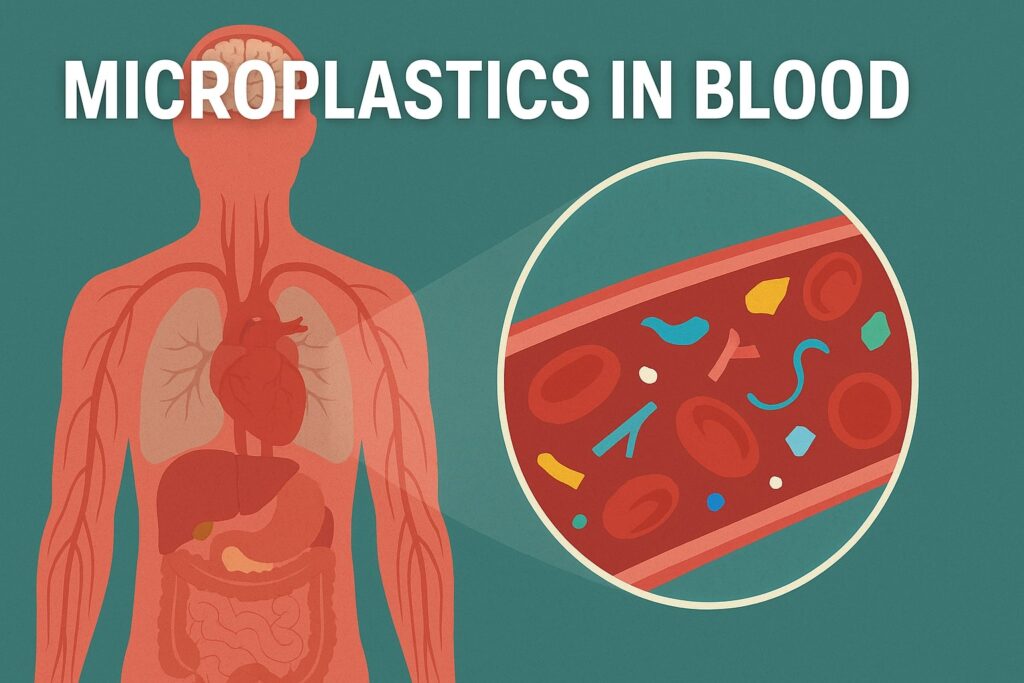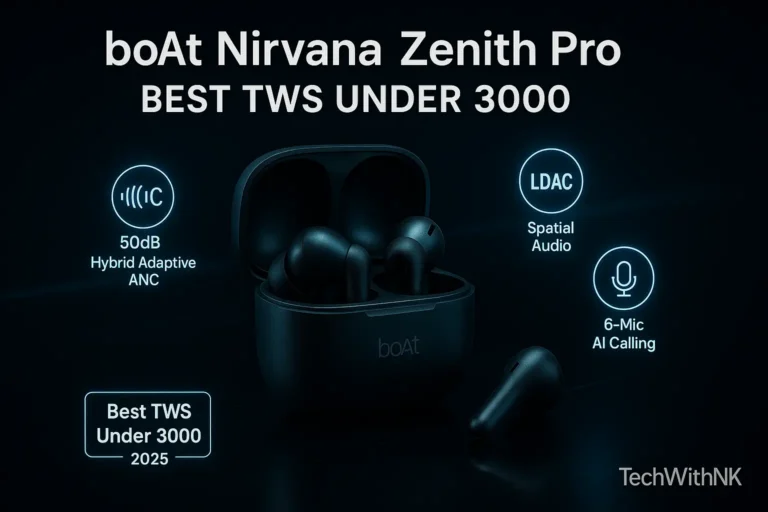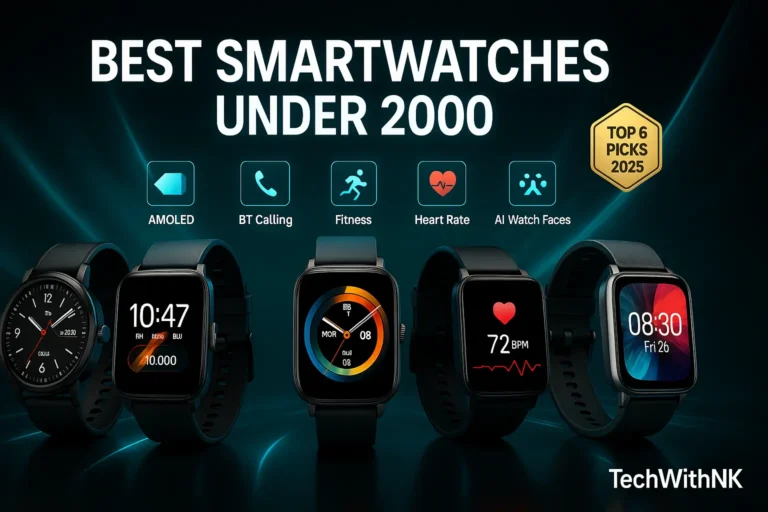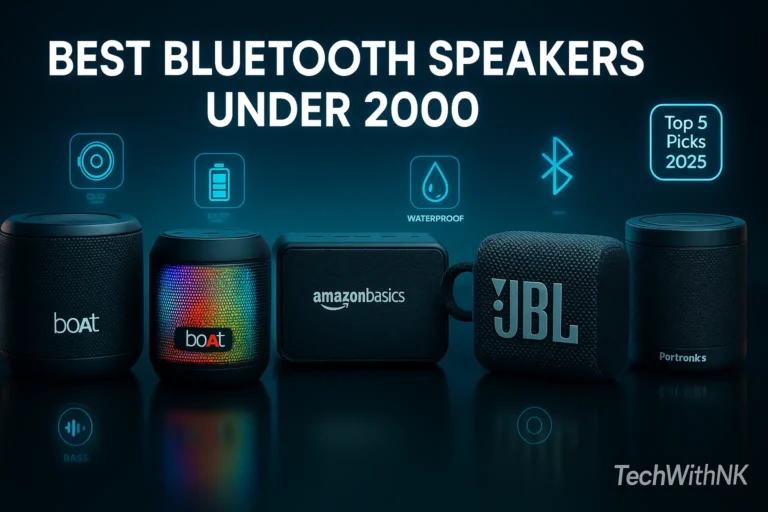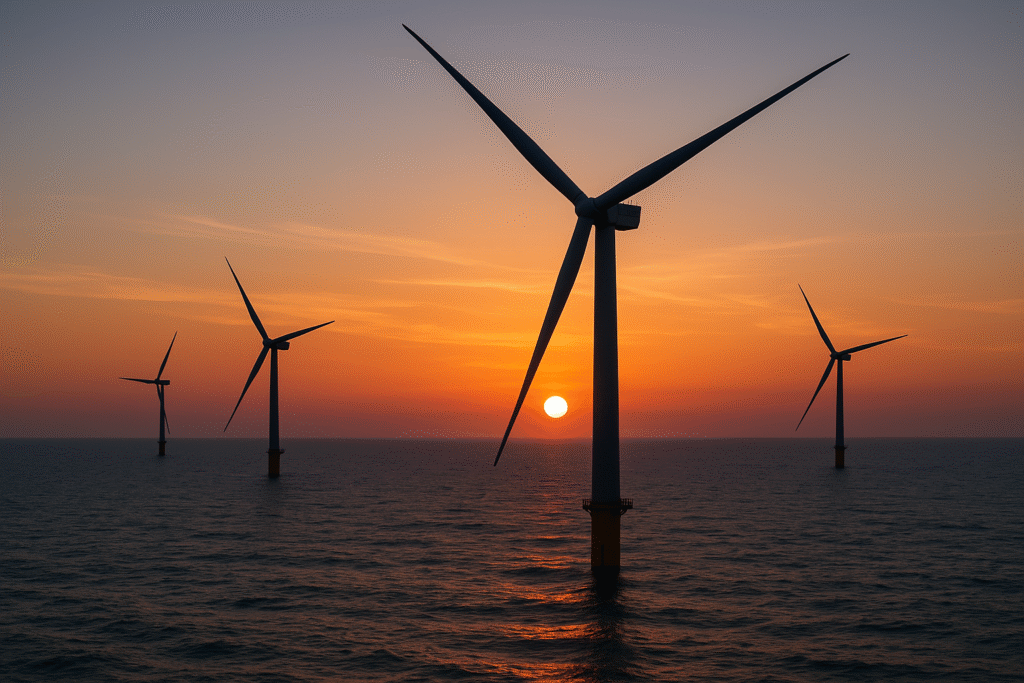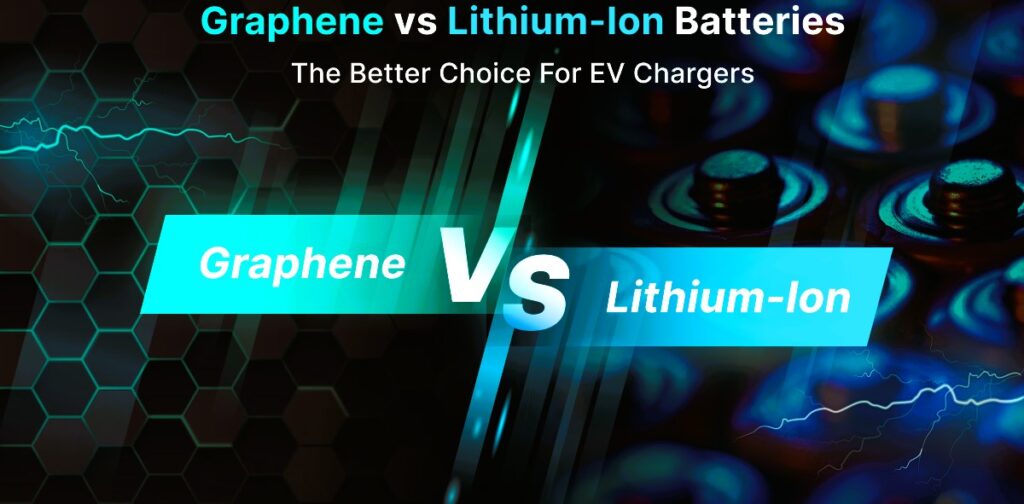Table of Contents
ToggleIntroduction to Microplastics in Your Blood: A Silent Threat
Plastic revolutionized the 20th century. From packaging and electronics to clothing and construction, it became the backbone of convenience. But plastic never disappears. It only breaks down into tiny particles known as microplastics, which have now infiltrated our soil, oceans, air, and shockingly, our own bloodstream. This blog explores how microplastics enter the human body, the risks they pose, and what can be done about it.
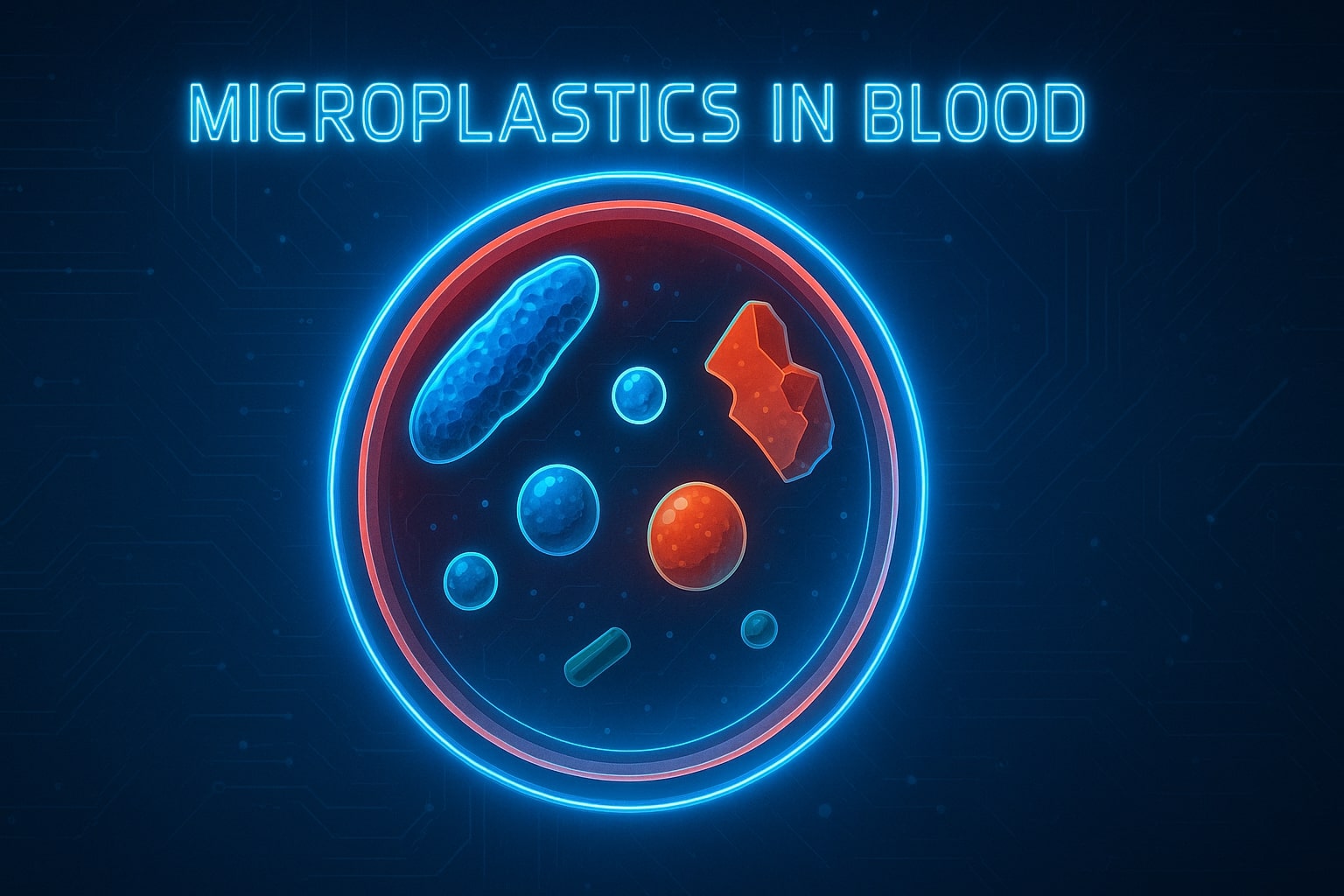
What Are Microplastics?
Microplastics are plastic particles smaller than 5 millimeters. They are categorized into:
1. Primary Microplastics
Lorem ipsum dolor sit amet, consectetur adipiscing elit. Ut elit tellus, luctus nec ulla
These are intentionally manufactured small plastic particles used in:
Cosmetics (e.g., exfoliating beads)
Toothpaste
Industrial abrasives
mcorper mattis, pulvinar dapibus leo.
2. Secondary Microplastics
These are fragments formed by the breakdown of larger plastic waste due to:
UV radiation
Weathering
Mechanical forces in oceans and rivers
They can be microscopic, even nanoplastic, which are less than 100 nanometers, and thus capable of passing through biological membranes.
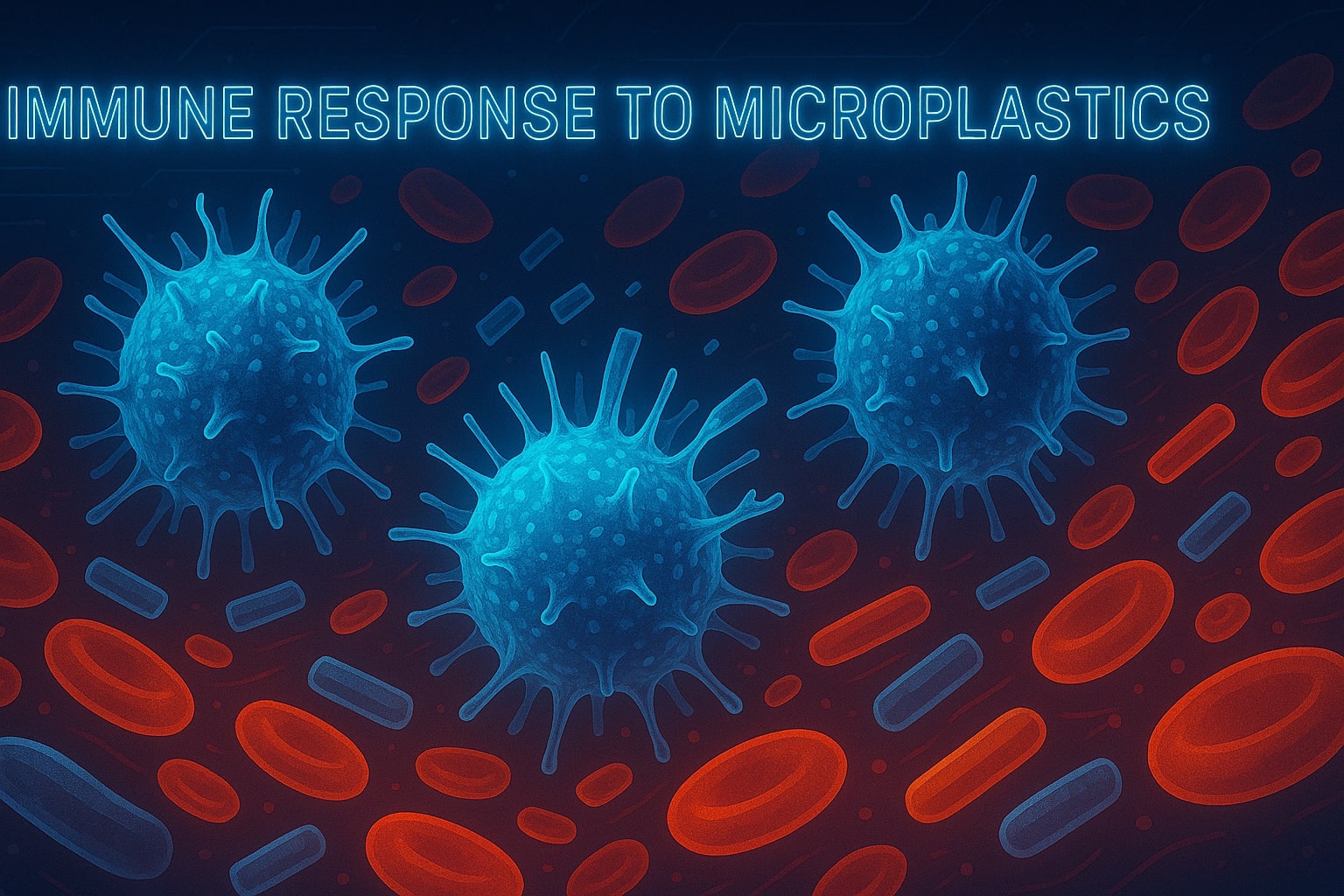
First Alarming Evidence: Microplastics in Human Blood
In 2022, a pioneering study conducted by Dutch researchers from Vrije Universiteit Amsterdam made headlines globally:
80% of blood samples from healthy adults tested positive for microplastics.
The most common types found were PET (polyethylene terephthalate), polystyrene, and polyethylene.
Some samples had up to 1.6 micrograms per milliliter of blood.
These findings confirm that microplastics are not just an environmental hazard — they are part of us now.
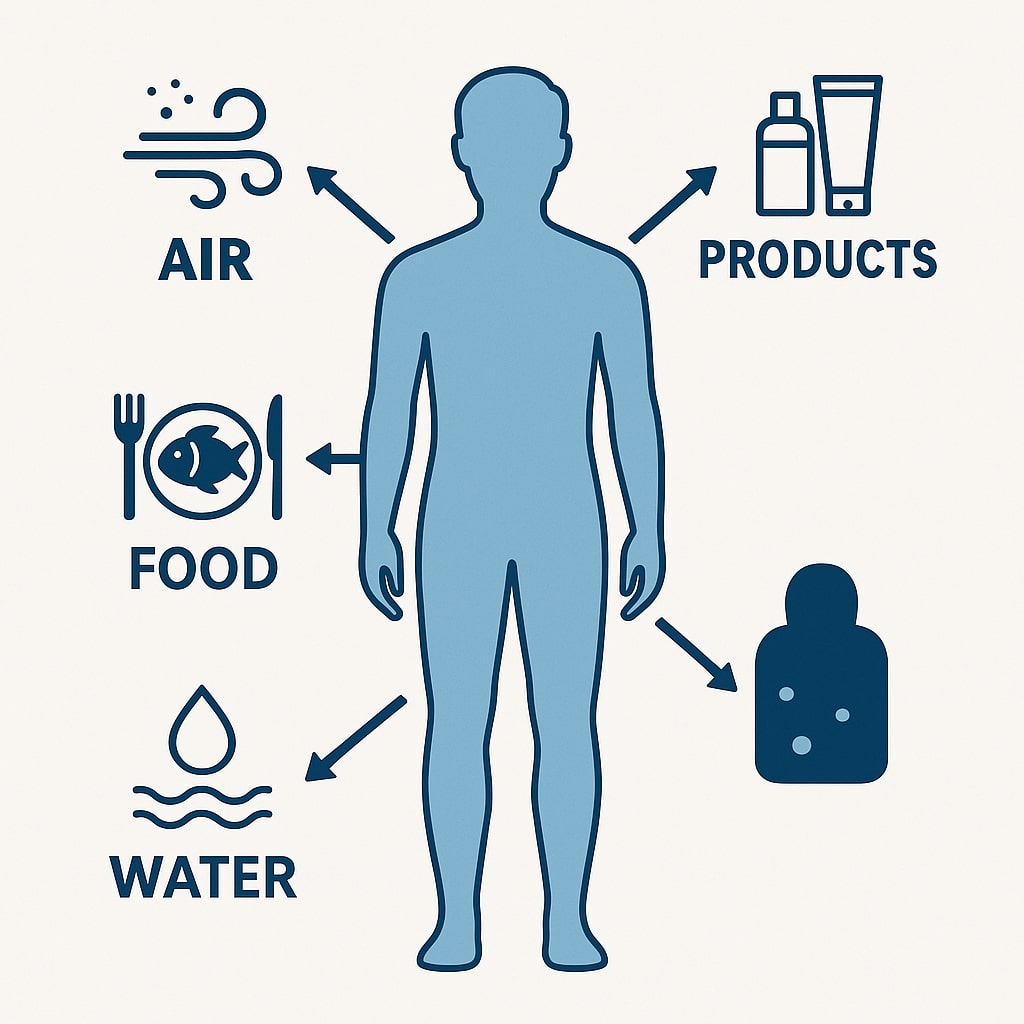
How Do Microplastics Enter Our Bloodstream?
1. Ingestion
Drinking Water: Tap and bottled water worldwide contain microplastics. Studies show bottled water can have over 90 microplastic particles per liter.
Seafood: Fish and shellfish ingest plastic; humans absorb it through consumption.
Salt and Sugar: Table salt, particularly sea salt, contains microplastics.
Produce: Microplastics in soil transfer to vegetables and fruits through root absorption.
2. Inhalation
Synthetic fibers from clothing, upholstery, and carpets shed microplastic particles.
Indoor dust can contain up to 60% microplastics.
We inhale millions of these particles annually, especially in urban areas.
3. Dermal Absorption
Though less common, some research suggests nanoplastics may penetrate skin layers, especially with cosmetic and skincare products containing plastic compounds.
4. Medical and Pharmaceutical Exposure
Plastic packaging of drugs
IV bags and tubing made from PVC or other plastics
Contact with microplastic-contaminated surgical equipment
Health Effects of Microplastics in Human Blood
1. Inflammation and Immune Disruption
Microplastics can activate immune responses leading to:
Chronic inflammation
Oxidative stress
Tissue damage
They are recognized as foreign invaders, causing the immune system to remain in a constant state of alert.
2. Hormonal Imbalance
Many plastics contain additives like:
Bisphenol A (BPA)
Phthalates
Dioxins
These substances are endocrine disruptors, interfering with hormone function and potentially contributing to:
Infertility
Early puberty
Thyroid dysfunction
Breast and prostate cancers
3. Cell and Organ Damage
Nanoplastics may cross the blood-brain barrier.
Potential damage to the liver, kidneys, and lungs.
Ability to bind to heavy metals and other toxins, amplifying their harmful effects
4. Potential Genetic Damage
Some studies suggest plastics could influence gene expression and DNA stability, increasing long-term risks of mutation and disease.
Global Research Highlights (2022–2025)
2023 (UK – University of Hull): Microplastics found in 100% of lung tissue samples.
2024 (WHO): Issued a preliminary health advisory citing microplastics as an “emerging public health concern”.
2025 (EU Commission): Launched Europe-wide ban on microplastics in rinse-off cosmetic and cleaning products.
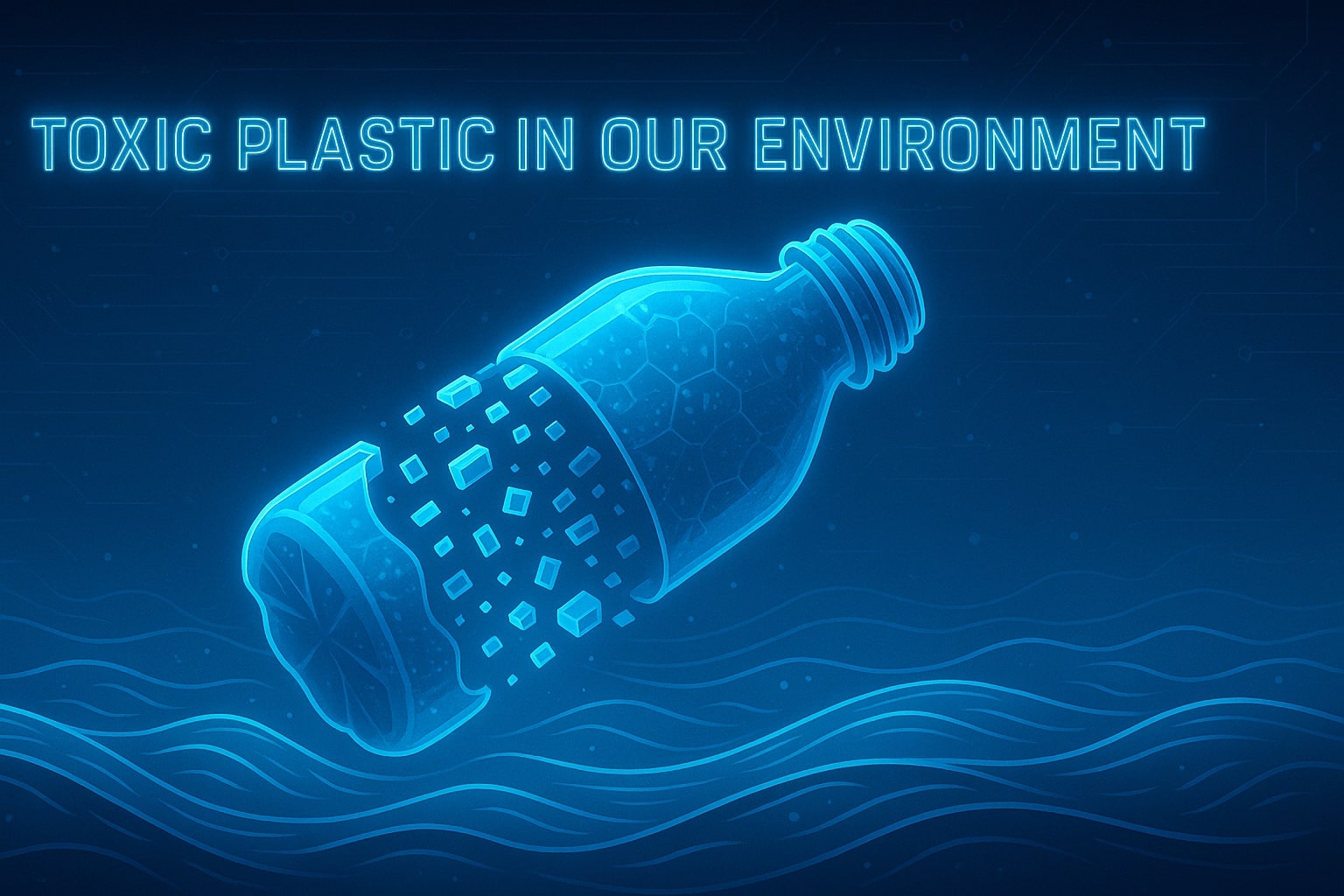
Microplastics in the Environment: The Source of the Problem
Oceans
11 million tons of plastic leak into the ocean each year.
Microplastics are found in 114 aquatic species.
Coral reefs and plankton — crucial to ocean ecosystems — are threatened.
Soil and Agriculture
Use of plastic mulch and compost contaminated with microplastics has polluted agricultural lands.
Plants can absorb plastic through roots, passing it into the food chain.
Air and Rainfall
Studies have found microplastic particles in rainwater, snow, and mountain air.
Even remote locations like the Arctic and the Alps show measurable concentrations.
Everyday Products That Contribute to Microplastic Exposure
Synthetic clothes (polyester, nylon, acrylic)
Wet wipes and disposable sanitary products
Single-use plastic containers and cutlery
Tea bags made of polypropylene
Paints, glitters, and car tires
Can Our Body Eliminate Microplastics?
Currently, there is no known mechanism by which the body eliminates microplastics efficiently. Some may be:
Excreted through feces
Stored in fatty tissues
Transported across membranes into organs
How to Reduce Your Microplastic Exposure
1. Use Alternatives to Plastic
Choose glass, stainless steel, or bamboo over plastic containers.
Avoid plastic-wrapped produce.
2. Filter Your Water
Use carbon block or reverse osmosis filters.
Avoid drinking from single-use plastic bottles..
3. Rethink Your Wardrobe
Choose natural fabrics: cotton, hemp, silk, and wool.
Wash synthetic clothes in microfiber-catching laundry bags.
4. Say No to Microbeads
Avoid cosmetics with ingredients like polyethylene or polypropylene.
Look for certified microplastic-free labels.
5. Improve Indoor Air Quality
Vacuum and mop frequently.
Ventilate rooms and reduce dust buildup.
Government and Industry Action
Global Agreements and Laws
UN Treaty on Plastic Pollution (draft stage as of 2025)
EU Microplastic Ban (2024)
India’s Extended Producer Responsibility (EPR) regulations
Industry Response
Brands like Unilever, L’Oréal, and Adidas have pledged to remove microplastics from products.
Biodegradable alternatives and innovations in plastic-free packaging are increasing.
Educational and Public Awareness Campaigns
#PlasticFreeJuly: A global movement encouraging people to refuse single-use plastic
Earth Day Campaigns: Focused on plastic pollution themes
Documentaries: “Seaspiracy,” “The Story of Plastic,” and “Plastic Oceans”
Conclusion: Turning Awareness Into Action
The presence of microplastics in human blood signifies a new frontier in the plastic pollution crisis. No longer limited to oceans or distant animals, plastic is in our veins. While science continues to understand the full impact, the urgency to reduce plastic use is now personal. We must shift habits, push for regulation, and support innovations that prioritize human and planetary health. Our future depends on it.
Are microplastics dangerous to humans?
Yes. Early research indicates they can cause inflammation, hormone disruption, and potential organ damage.
How do microplastics get into our blood?
Through ingestion of contaminated food/water, inhalation of polluted air, and dermal exposure from plastic-containing products.
Can microplastics be removed from the body?
There is no proven method yet. Most are believed to accumulate in tissues or be slowly excreted.

